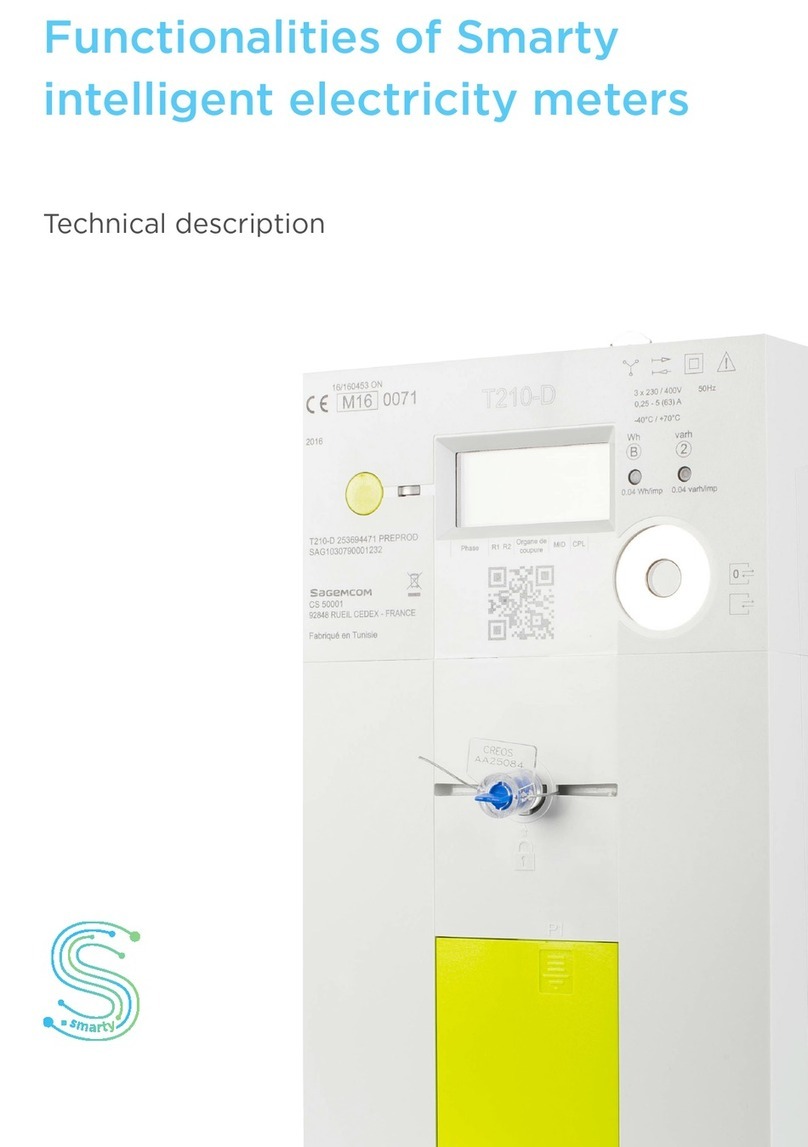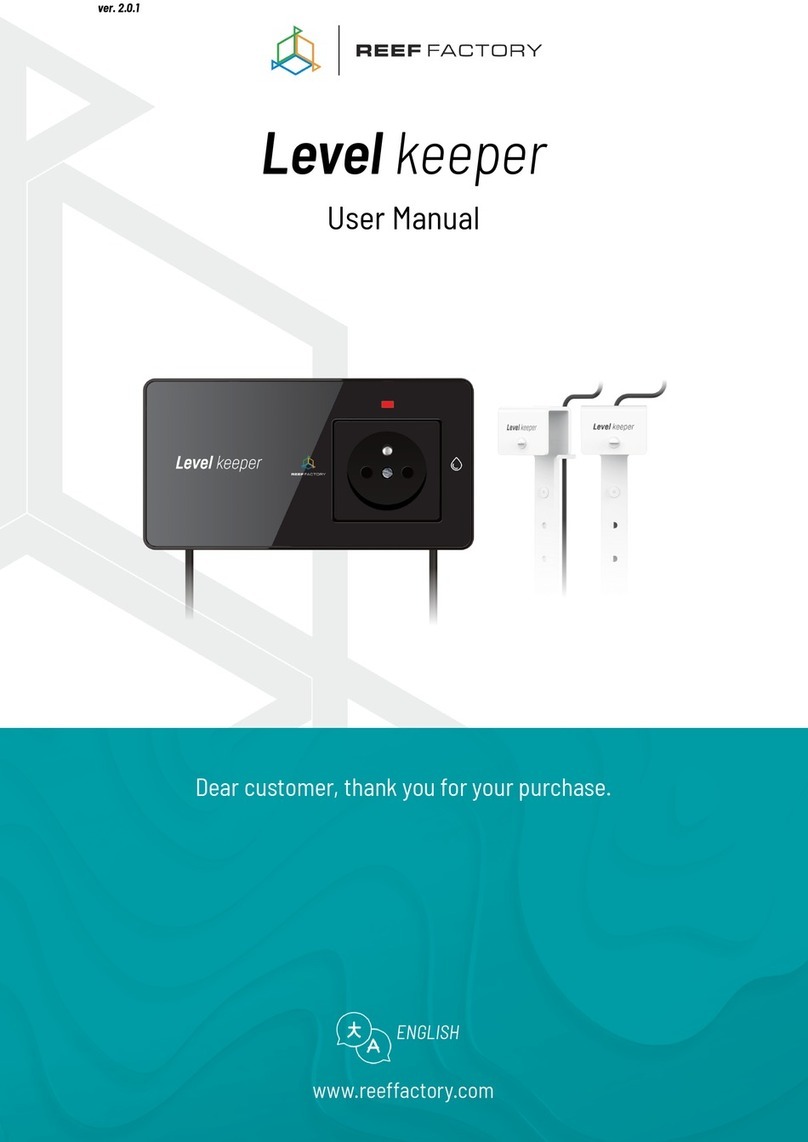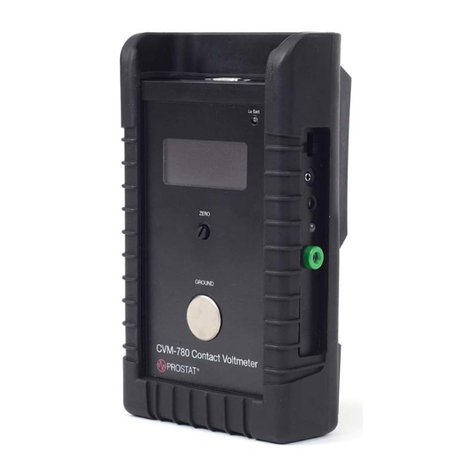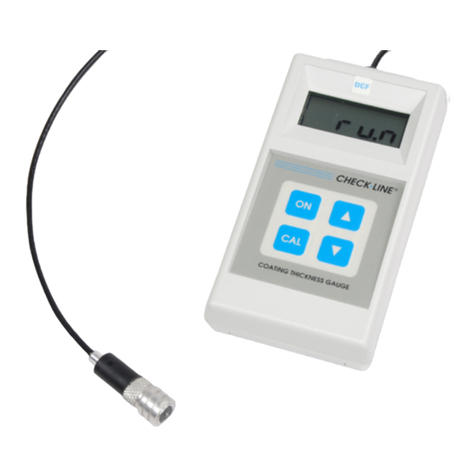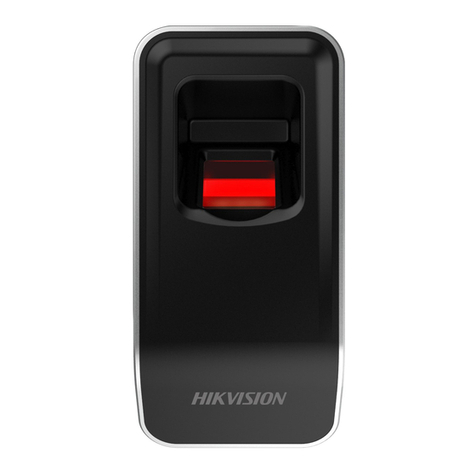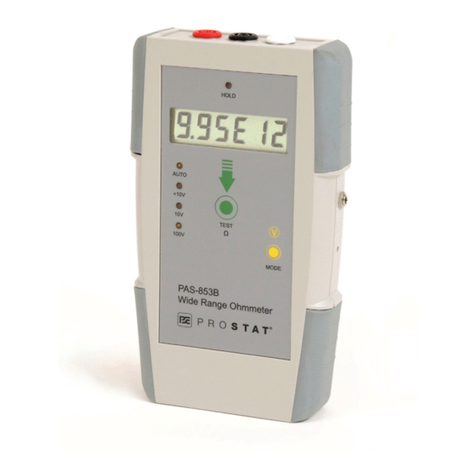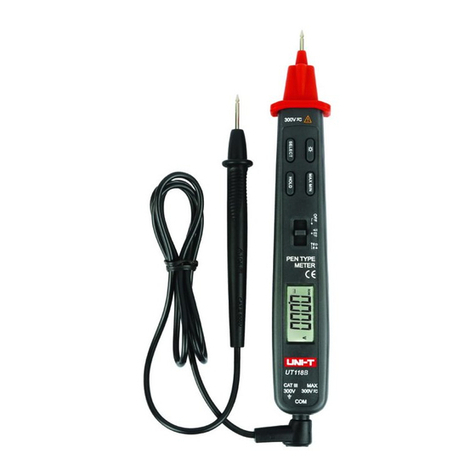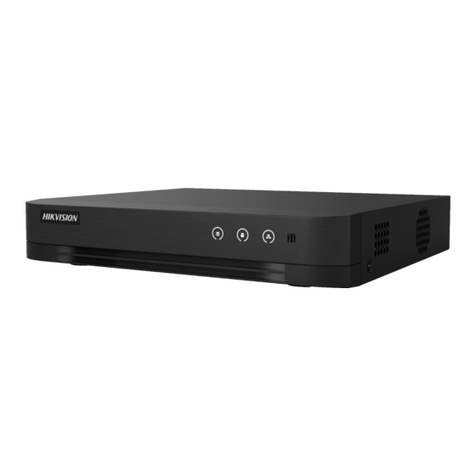Du Pont 943 TMA User manual

,943
TMA
Thermomechanical Analyzer
-------------------------
Operator's Manual
~REG. U.S. PAT
s.
TM. OfF.

Thermal Analyzers
Instrument Systems
Operator's Manual
943
Thermomechanical
Analyzer
Du Pont Company
Instrument Systems
Concord Plaza - Quillen Building
Wilmington, OE 19898
PN 943145-000, Rev. F
Issued April 1985

INTRODOCTION

HEATER
4/79B
943/1
Introduction
Introducing the 943 TMA
The Du Pont 943 TMA is a pluq-in module that can be used with any of the Du Pont Thermal Analyzer
contra I consoles to make up a system for collecting and reporting data from thermal experiments.
The system measures changes in sampie properties resulting from changes in three experimental
variables: temperature, atmosphere, and time.
In the TMA, a sampie, which can be formed asa plug, film, powder, or fiber, is compressed or held in
tension by a probe assembly. Movement of the probe is translated electrically by a linear variable
differential transformer (LYDT) attached to the probe, into a signal that appears on the Y axis of the
plotter.
The TMA usesinterchangeable probes that allow you to make anumber of important measurements,
including softening point, tensile modulus, compression modulus, glass transition, and expansion
coefficient. With the optional accessories for the system, you can do experiments in parallel plate
rheornetry, fiber tension, stress relaxation, and dilatometry.
ACCESSORY KIT
943 Thermomechanical Analyzer
2

3
Introduction
SYSTEM COMPONENTS
The TMA cabinet holds the head assembly (containing the LVDT), the probe assembly, the sampIe
holder, the heater, and the Dewar flask.
WEIGHT TRAY
UPPER SHAFT
OF PROBE ASSEMBLY
PROBE POSITION-
CONTROL THUMBSCREW
HEAD ASSEMBLY DEWAR CAP
TRANSDUCER POSITION-
CONTROL THUMBSCREW
DEWAR FLASK ./""
HEATER
ASSEMBLY
ACCESSORY KIT
4/83C
943/5
• head assembly Attaches to the cabinet by a retaining nut and ring. Contains the LVDT
for measuring vertical movement.
• probe assembly - lnterchangeable for making several different measurements. Holds a
weight tray for loading weights onto the sampIe. Positioned vertically
on the sampIe by the probe position-control thumbscrew.
• sampIe holder lnterchangeable for making several different measurements. Contains
the sam pIe thermocouple.
• heater assembly :-:- Surrounds the sarnple holder; contains the Platinel 11control thermo-
coupIe.
• Dewar flask Used as a temperature chamber below ambient, agas chamber, and a
container for holding coolants. Slips over the heater assembly and
screws into the Dewar cap.

Introduction
ACCESSORY KIT
The accessory kit supplied with the TMA contains weights, a weight tray, sam pie holders, a level, an
Allen wrench, tweezers,samples for calibration, and compression probes.
The probes provided allow you to determine expansion coefficients and to examine films and coat-
ings without removing them from the substrate.
Probe Descriptions
Contact Load Exerted
Description Diameter
by
1 9 Load
mm
(ln.)
(kPa)
0
Penetration Probe
0.89 (0.035) 16
D
Expansion Probe
2.54 (0.100) 1.9
l1
Macro Expansion
6.07 (0.239) 0.34
Probe
Optional probe assemblies are described in the appendix to this manual, beginning on page
000.
SPECIFICATIONS
• Temperature Ranges
-180o
eto
800
0
e(Standard heater)
Ambient to
1200
0
e(with
optional
l
Züü'C heater)
• Sampie Height. . . . . . . . . . . . . . . . . . . . . . . . . . . ..
25
mm
(1
in.) maximum
• Sampie Diameter. . . . . . . . . . . . . . . . . . . . . . . . ..
9.5
mm
(.375
in.) maximum
• Sensitivity
0.5
to
500
Mm/cm of chart
• Displacement Range
±1.3
mm
(± 0.05
in.)
• Linearity ... :...............................
± 0.5%
• Loading . . . . . . . . . . . . . . . . . . . . . . . . . . . . . . . . . ..
0
to
100
grams
• Baseline................................... Less than
1.3
Mm total displacement, from
-100o
eto
600
0
e
4

INSTALLATION

CAUTION -----------------,
Installation
Installing the 943 System
When you receive the 943 TMA, inspect the instrument and shipping container for signs of shipping
damage, and check the parts received against the shipping list. If the instrument is damaged, notify
the carrier and Du Pont Instruments immediately. If the instrument is intact but parts are missing,
notify Du Pont Instruments. You will find a list of Du Pont offices on the back cover of this manual.
ASSEMBLING THE TMA
1. Holding the Dewar cap in one hand, unscrew the Dewarf1askfrom the cap. Referto the figure on
.page 7 for parts identification.
2. Remove the Dewar cap from the TMA head assembly.
The sarnple-holder tube is fragile and should be handled with care.
3. Select a sarnple-holder tube from the accessory kit and insert it through the top of the Dewar
cap. Two teflon washers are used between the holder and cap.
4. Replace the Dewar cap on the head assembly; hand tighten. The hole in the Dewarcap should
face the thermocouple connectors on the front of the TMA cabinet. If necessary, loosen the
setscrews in the Dewar cap with the Allen wrench supplied in the accessory kit. Turn the Dewar
cap until the' hole faces the thermocouple connectors and tighten the setscrews.
5. Using the tweezers from the accessory kit, thread the thermocouple leadsthrough the hole in
the Dewar cap (see detail A on page 7).
...----------------- NOTE ----------------,
Make sure that the bare thermocouple wires do not touch, asthis could cause erroneous
readings.
6. Connect the red thermocouple lead to the upper connector and the yellow lead to the lower
connector.
7. Remove the retaining nut from the top of the TMA head assembly. Do not remove the nylon
washer beneath the nut.
8. Use tweezers to remove the bearing guide. Two holes are provided in the guide for easy
removal.
9. Make sure that the probe position-control thumbscrew is above the half-way point on the
slotted cutout in the head assembly. Turn the thumbscrew counterclockwise to move it up.
~--------------- CAUTION ----------------,
• Do not drop the probe assembly into position; the delicate sarnple-holder tube could be
broken. .....-
• Try not to move the probe assembly from side to side while installing it. Side movement
may bend or break the probe.
6

o
WEIGHTTRAY
~...__________ RETAINING NUT
~
~ GRAPHITE
~ BEARING GUIDE
~ UPPER SHAFT
~ZERO SPRING
Installation
~~~~;J~~~tJ1gS~~~~E
IN DEWAR CAP
~
CONNECT
THERMOCOUPLE
tRED LEAD
TO UPPER JACK
.-<
CONNECT
THERMOCOUPLE
YELLOW LEAD
TO LOWER JACK
COLOR-CODE
LOCATION
SAMPLE-
HOLDER
TUBE
THERMOCOUPLE
DETAIL A
THERMOCOUPLE
INSTALLATION
PROBE
------- NYLON WASHER
PROBE POTSHIT0~NBSCREW
CONTROL
HEAD ASSEMBLY
THUMB
LOCKNUT
ADJUSTABLE
FOOT (3)
SAMPLE-HOLDER TUBE
DEWAR
CAP TOP
TEFLON®
WASHERS (2)
DEWAR CAP
SETSCREWS
DEWAR
CAP
DEWAR/
FLASK
4179C
943/3
943 TMA Parts Identification
7

Installation
The penetration probe is installed in the same manner as the expansion probe.
The macro probe is installed in two pieces as shown here.
10. Insert the expansion probe assembly from the accessory kit into the head assembly as shown on
page 7.
r------------------------------NOTE-------------------------------.
UPPER SHAFT
ASSEMBLY
MACRO PROBE
4179C
943/8
11. Replace the bearing guide and the retaining nut.
12. Tap the top of the probe assembly gently to make sure that itmoves freely and is spring-loaded.
Then, turn the probe position-control thumbscrew clockwise to lower the probe until its end
rests on the bottom of the sam pie-holder tube.
13. Place the retaining nut and weight tray on top of the probe assembly.
8

9
Installation
14. Place the TMA next to the programmer. The instrument should be on a vibration-free bench or
marble benchtop. Observe the following precautions:
• Do not locate the TMA near air conditioning or heating vents.
• Avoid locations where there are high levels of corrosive gases (such as sulfur dioxide or
hydrogen chloride), or where ventilation is poor.
• Avoid dusty locations and places where vibrations occur.
15. Place the level from the accessory kit on top of the weight tray. Level the TMA by adjusting the
three leveling feet on the base of the cabinet. To adjust the feet, loosen the thumb locknut for
all three feet and screw the feet into or out of the cabinet. When the instrument is level, tighten
the thumb locknuts and remove the level from the weight tray.
16. Raise the probe approximately 2 cm (1 in.) from the bottom of the sarnple-holder tube by turn-
ing the probe position-control thumbscrew counterclockwise.
17. Remove the weight tray, retaining nut, and bearing guide from the TMA.
18. Check probe alignment by looking down into the head assembly and observing the gap be-
tween the lower bearing and the probe. Ifthe probe appears to be touching the side of the head
assembly, rotate it until the gap is uniform around the probe.
19. Reinstall the bearing guide, retaining nut, and weight tray. Lower the probe until it rests on the
bottom of the sam pie-holder tube .
.------------------ CA(JTION -----------------,
Do not load the weight tray unless the probe is touching either the sample-holder tube
bottom or a sampIe.
20. Check the thermocouple connections for tightness.
HOOK-OP
To connect the 943 TMA to the programmer:
1. Make sure that the programmer power is off, and that the programmer power cord is unplugged
from the wall outlet. The 943 connector (marked ACCESSORY) is located on the back of the
unit. The cable and connector are keyed so that they can only be connected one way.
2. Connect the accessory cable from the programmer to the TMA.
3. Connect the programmer power cord to the wall outlet.
4. If you wish to use inert or reactive gases for testing, attach the external gas supply tube to
the TMA gas purge connection on the back of the instrument. The TMA is now ready for cali-
bration. Calibration procedures appear in part 3 of the manual.

OPERATION

Operation
Performing Routine Experiments
This section contains routine operating procedures for the 943 TMA. The section is divided into the
following parts:
• 943 Controls
• Heater Installation
• Dewar Flask Installation
• Applications Notes
• Calibration Procedures
• Routine Operating Sequence
• Subambient Operation
Specific instructions for operating the TMA with each of the optional accessories appear in the
appendix of the rnanual, beginning on page 000.
Before operating the TMA, you should have the unit instalIed and connected to a TA programmer.
943 CONTROLS
Controls for the 943 TMA are located on the front and rear panels of the cabinet. They aredescribed
in the tables that follow.
12

Operation
FRONT PANEL CONTROLS
(1) Baseline Control
The baseline control is used to obtain a level
baseline over a temperature range. The
base-
line calibration procedure appears on
page 000.
(2) Calibrate Control
This control is used to calibrate the output
signal from the TMA so that the
Y
axis reads
directly in
J.Lmjcm.
(3)
Zero Switch
The zero switch is used when positioning the
LVDT for electrical zero.Usethe down position
only with the Series
99
pragrcilTI"mer.In the
down position, the switch shorts output to the
Y
axis of the recorder, establishing a zero
reference. In the up position, the output of the
LVDT goes to the recorder.
(4)
Heater Switch
The heater switch is normally kept in the HIGH
position. Use the LOW position for low
ternp-
eratures (below 200°) and slow heating rates
(Iess than 5°Cjmin).
(5) Probe
Position-Control
Thumbscrew
The position-control thumbscrew is used to
raise or lower the probe for positioning on the
sampie.
(6) Transducer Position-Control Thumbscrew
This contral adjusts the position of the
trans-
ducer to the probe for zero output.
(7)
Derivative Reset Switch
(S~ries
99
only)
This switch has three positions:
Up - OFF
Middle - ON
Down - RESET
During normal operation, the derivative reset
4
switch is kept in the middle position. The up
and down positions are usedto zerothe output
of the derivative. The up position is a locking
position, and is normally used while loading
sampies or making adjustments. The down
position is a momentary (nonlocking) position
and is used to check the zero reference of the
derivative.
(8)
Dither Switch
This switch operates a small vibrator in the
TMA cabinet that reduces static friction around
the probe assembly. It may be used to remove
pen stepping during recorder tracings;
how-
ever, too high an adjustment can cause pen
vibration.
2
8
5
6
3
7
13

(15) Derivative Ramp Zero
This control isusedto zerothe derivative output
to the recorder zero.
1/S1C
943/4
Operation
REAR PANEL CONTROLS
(14) Cal-Norrnal Switch
The normal position is used for routine oper-
ation. The cal position is used during calibra-
tion.
13
(9) Control Reference Junction
The control reference junction is used to cali-
brate the control thermocouple.
(10) Sampie ReferenceJunction
The sampie reference junction is used to cali-
brate the sampie thermocouple.
(11) Derivative Zero
This screwdriver adjustment zeroes the Y axis
during calibration.
(12) Derivative Gain
The derivative gain control is a screwdriver
adjustment that is used to calibrate derivative
gain as a tirne-base function.
(13) Ramp Out Jacks
These jacks are used to connect the TMA to a
recorder or oscilloscope.
11
12
14

15
Operation
HEATER INSTALLATION
1. Slip the heater over the sampIe holder. Insert the heater support arm all the way into the slot in
the Dewar cap.
HEATER
SUPPORT
ARM THUMB
LOCK NUT
HEATER
ASSEMBLY
TEMP. HEATER
SOCKET
I
-.."
4179A
943/26
2. Make sure that the heater does not touch the sampIe holder. If it does, adjust the heater as
folIows:
a. Vertical Adjustment
CAOTION --------------~
When performing this adjustment, hold the support arm rigid to prevent the arm from
breaking at the weId joint.
To adjust the support arm, hold the vertical part of the arm rigid and gently be nd the hori-
zontal part. Bending downward will rota te the heater's vertical axis clockwise; bending
upward will rotate the heater's vertical axis counterclockwise.

Check heater alignment whenever the sarnple-holder tube is replaced.
Operation
I
VERTICAL AXIS
5/838
943/28
b. Horizontal Adjustment
To adjust the support arm horizontally, loosen the adjustment tab locknut and screw the tab
in or out as needed. Tighten the locknut .
.----------------- NOTE ---------------,
3. Attach the heater to the Dewar cap by tightening the support arm locknut.
4. Insert the heater plug into the TMA heater socket.
16

17
Operation
DEWAR FLASK INSTALLATION
.----------------- CAOTION -----------------,
The Dewar flask seals will melt at temperatures above 500°C.
To install the Dewar flask, tilt the flask and slip it over the heater. Then, while holding the Dewar cap in
one hand, screw the flask into the cap.
DEWAR CAP

Operation
18
APPLICATION NOTES
The following are some notes and precautions related to applications of the 943 systems.
r----------------
WARNING
Wear protective gloves when handling the heater. The outside surface of the heater be-
comes hot during operation.
CAGTION -----------------------~
• The Dewar flask seals will melt at temperatures above 500°C.
• Do not leave the heater switch on lowwhen heating to a final temperature above 200°C,
or at a rate faster than 5°C/min.
r-----------------NOTES ----------------,
• Between -40°C and O°C,false penetration may occur due to ice.
• To remove water from the system, thoroughly rinse the probe and sample-holder tube
with acetone and allow drying time for evaporation.
• When adjusting the thumbscrews for the TMAprobe position control and the transducer
position control, maintain approximately the same distance between them. Otherwise, a
false zero setting of the
Y'
-axis pen may occur, or full downward travel of the probe may
be hampered.
Check the zero setting, by moving the transducer above and below the zero point, to see
if the output moves equally above and below the set point.
• Make the final adjustment of the probe assembly at a temperature below that ofthe low-
est transition expected in the material under investigation.
• SampIes for penetration and expansion should be as thin as possible to minimize tern-
perature gradients in the sampIe. A height of 2.5 to 5 mm (100 to 200 mils) is normal
for making expansion measurements on sam pIes having expansion coefficients in
the order of 100
J.!
m/m°C.
• Film sam pIes should be as flat as possible to prevent false penetrations due to buckling
or relaxation.
• Powdered siliea can be used both above and belowthe sampIe to level the sampIe and to
prevent lateral movement of both probe and sampIe. Powdered or finely divided silica
can be purchased from most chemical supply houses.
• SampIes can be heated and formed into cylinders and then cooled; however, doing so
may change important thermal history.
• A heating rate of 5°C/min is best for polymerie and elastometric materials.
• When searching for softening temperatures, studies of loading versus penetration are
helpful to eliminate false values of Tg.
• Temperature programs should be started weil below the temperatures of any known
transitions, since straight-line extrapolations are normally used to define transition
temperatures.

19
Operation
CALIBRATION PROCEDORES
The 943 system must be calibrated at installation and periodically thereafter. The calibrations de-
scribed in this section include:
• Baseline Calibration
• Temperature Calibration
• Y'·Axis Static Calibration
• Y·Axis Derivative Calibration
• Y·Axis Dynamic Calibration
Baseline Calibration
The baseline should be checked as part of the initial set-up procedure and adjusted if necessary.
Afterward, it should only need adjustment after servicing.
To adjust the baseline:
I.
Prepare the TMA with a sampIe holder, probe and weight tray.
2. Adjust the probe position control so that the probe just rests on the sample-holder platforrn.
3. Place a 5 9 weight on the weight
tray,
4. Attach the heater to the TMA.
5. Set the Y(Y'}·AxisRANGE to its maximum sensitivity and adjust the Y(Y'}·AxisZERO SHIFT so
that the pen is in the center of the chart paper. Dir
r-
I
{Jwv
6. Heat at 5°Cjmin from ambient to desired upper
limit,
7.
If
the baseline deviates from the horizontal more than 2.5 cm, adjust the BASELINE control on
the front of the TMA to bring the pen back toward the center of the
chart,
8. Repeat steps 6 and 7 until the desired baseline is achieved.
Temperature Calibration
The temperature calibration procedure is used to adjust the temperature readings of the recorder
and programmer to standard with a known melting point.
SAMPLE THERMOCOUPLE
To calibrate the sampIe thermocouple:
I.
Prepare the TMA with a sampIe holder, probe, and weight
tray,
2. Place an indium sam pIe on the sample-holder platforrn.
3. Adjust the probe position control so that the probe just touches the sarnple.
4. Place a 5 9 weight on the weight tray.
5. Attach the heater to the TMA.
6. Zero the electrical signal from the TMA, as described in the Y'·Axis static calibration on page 20.
7. Heat the indium sampIe from ambient to 170°C. Record the
scan,
8. Note the difference in inflection point from the standard (156.6). For example, 158.0°C -
156.6°C =1.4°C_If the inflection point is not 156.6°C, proceed to Step 9.
Table of contents
Popular Measuring Instrument manuals by other brands
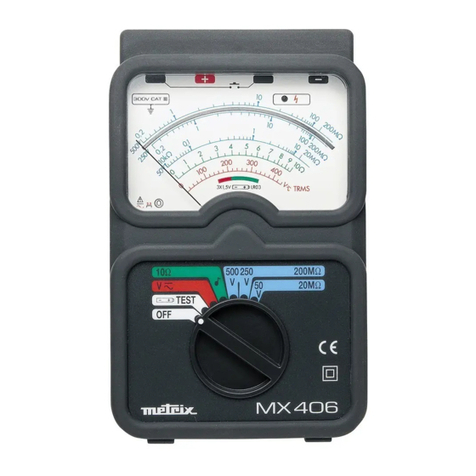
Metrix
Metrix MX 406B user manual

X-Cite
X-Cite Exacte user guide

Great Plains Industries, Inc.
Great Plains Industries, Inc. GPI 01A Series owner's manual

ABQINDUSTRIAL
ABQINDUSTRIAL DELMHORST J-2000 owner's manual
ICON
ICON truflo TKP Series QUICK START OPERATING GUIDE

LineEye
LineEye LE-650H2 Installation and operating manual
